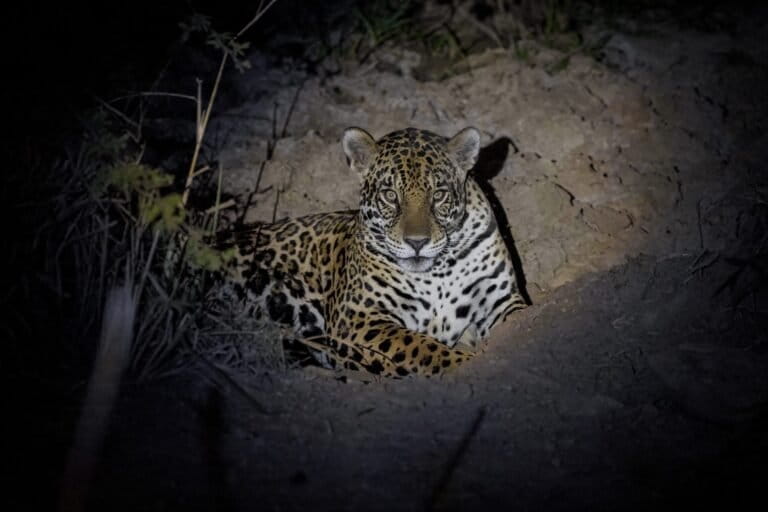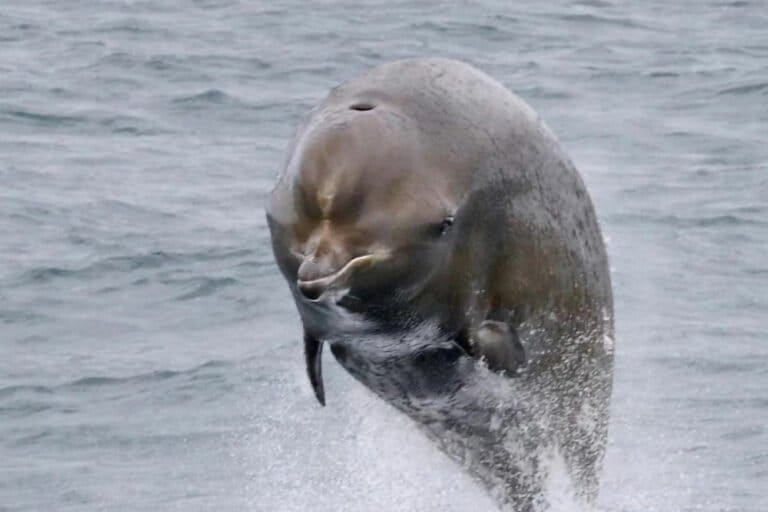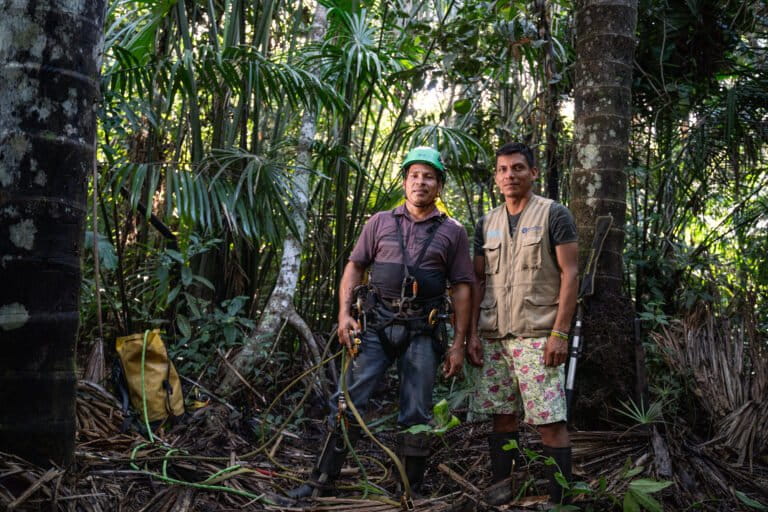- Scutellastra mexicana, the world’s largest limpet, is at risk of extinction and requires urgent conservation action, according to a group of researchers.
- Once widely dispersed, the few remaining viable populations of these sea snails are now found in Mexico’s Islas Marias, a biosphere reserve. Though officially protected, the limpet continues to be harvested.
- Limpet species such as S. mexicana play an important role in maintaining coastal ecosystems, and research suggests they can mitigate some of the effects of warming oceans.
- Researchers are calling for “extreme protection” for S. mexicana and the Islas Marías to halt the species’ decline and potential extinction.
The world’s largest limpet, Scutellastra mexicana, is making its last stand on a group of islands off Mexico, with experts warning that it may slip into extinction without urgent conservation action.
Researchers counted the limpets, a species of sea snail, around Mexico’s María Madre Island, a prison until 2019. They found only around 2,300 individuals, at “very low” density and “no recent recruitment,” according to a recent study published in the journal Aquatic Conservation.
This may be the limpet’s last stand, as the Islas Marías — a biosphere reserve that includes the María Madre, María Magdalena and María Cleofas islands — is the only place where there are self-sustaining populations, according to the researchers. The species has already been widely extirpated from its historical range along Mexico’s Pacific coast.

Coupling their results with upcoming research, José Luis Carballo, a researcher with the National Autonomous University of Mexico, said it’s clear the Islas Marías are vital for the species’ survival.
“We have been able to confirm that the species has practically disappeared from the continental coastline and only isolated specimens remain, or at the most, very small groups of a few specimens,” he wrote in an email to Mongabay.
Exploitation of S. mexicana in Mexico dates back to precolonial times, but heavy harvesting for meat and shells peaked in the 1970s and ’80s, with tons of limpets picked from coastlines. Consequently, it was listed under “special protection” in Mexico, but Carballo said this didn’t result in the species’ recovery.
Previous research by Carballo and his team recorded the “decimation” of a limpet population on the island of María Cleofas. In August 2017, they recorded a self-sustaining population of 808 limpets. But just one year later, they estimated only 304 remained due to rampant overexploitation.
“It is imperative to establish legal measures, and extreme protection of these areas to help the viability of S. mexicana,” Carballo and his colleagues wrote in the paper. “Several studies have shown that limpet populations respond positively to management measures, as long as there is enforcement of those measures.”
Limpets: Underacknowledged and under threat
Even though S. mexicana is the world’s largest limpet, reaching up to 35 centimeters (14 inches) in length, it’s part of a group that historically has received little conservation attention.
While limpets might not be as charismatic as other marine or coastal species, experts such as Free Espinosa, a researcher with the Marine Biology Laboratory at the University of Seville in Spain, underline that these unassuming mollusks are key players in maintaining the health and diversity of shorelines they hug on to.
He likens the role of limpets to herbivores in woodlands or savannas, where their loss can result in “cascading effects” across the ecosystem. As grazers, they control algae coverage and allow the coexistence of several species, “maintaining a mosaic of bare rock and algae patches,” Espinosa wrote in an email to Mongabay.

Being ecosystem shapers, limpets such as S. mexicana can benefit local fisheries as they act as a linchpin in intertidal and subtidal food chains, according to Emilio Michel Morfin, a researcher with the University of Guadalajara who was not involved in the study.
Recent research also suggests coastal grazers such as limpets can play an important role in mitigating the impacts of warming oceans driven by climate change, as they act as a “buffer.”
“Protecting S. mexicana can make ecosystems more resilient since limpets in general help to preserve trophic and competitive interactions, dampening the impact of warming on overall community composition,” Carballo wrote.
What makes limpets especially vulnerable is how accessible their habitat is to humans, Espinosa said. “The coastal zones, specifically the intertidal area, are easily accessible and many populations are threatened by humans, especially during summer season in touristic sites.”
Enhanced protection measures to preserve some rare or threatened limpet species are in place, as is the case for Patella ferruginea, a highly threatened limpet found in the Western Mediterranean, according to Espinosa. S. mexicana is similarly legally protected in Mexico, but lack of enforcement has thus far left this status ineffective.
The limpet’s last bastion
Carballo and his colleagues are aiming to upgrade S. mexicana’s legal status from a threatened species under “special protection” to a “species in danger of extinction.” With that, they argue, exploitation must be halted and the species placed under what they term “extreme protection.” Without such measures, the limpet may face an imminent demise, they say.
“Once this new status is achieved, information and awareness campaigns will be carried out in the fishing communities that have traditionally harvested this species, so that they understand its cultural and ecological value, which is so emblematic of Mexico,” Carballo said.
Troublingly, the team found low population density and few juveniles on María Madre Island. This may be due to the natural difficulty of the species to reproduce in the intertidal area, but could also be due to the “preferential harvesting of the largest specimens,” they write. As females are larger, their removal can cause add an imbalance in the population.
“I think it is the last bastion for the species,” said Michel Morfin, who has also conducted research on S. mexicana. He added that other enduring populations of limpets are either too small or fragmented to successfully breed. Continuing along this trajectory could lead to further localized extinctions, eventually signaling its demise.
Espinosa agree that action must be taken soon to save S. mexicana: “Poaching has to be eradicated completely and the habitat where the species is still present must be protected.”
Citations:
Carballo, J. L., Bautista‐Guerrero, E., Yáñez, B., Carballo, L. R., & García‐Gómez, J. C. (2023). Population status of the world’s largest limpet, Scutellastra mexicana (Mollusca: Patellidae), on María Madre island, Mexico: Possible last bastion of a species facing global extinction. Aquatic Conservation: Marine and Freshwater Ecosystems. doi:10.1002/aqc.3978
Carballo, J. L., Yáñez, B., Bautista‐Guerrero, E., García‐Gómez, J. C., Espinosa, F., Tortolero‐Langarica, J. J. A., & Michel‐Morfín, J. E. (2019). Decimation of a population of the endangered species Scutellastra mexicana (Broderip and Sowerby, 1829) (Mollusca, gastropoda) in the Marías island (Eastern Ocean Pacific) Biosphere Reserve. Aquatic Conservation: Marine and Freshwater Ecosystems, 30(1), 20-30. doi:10.1002/aqc.3239
Kordas, R. L., Donohue, I., & Harley, C. D. G. (2017). Herbivory enables marine communities to resist warming. Science Advances, 3(10). doi:10.1126/sciadv.1701349
Banner image: Scutellastra mexicana plays an important ecological and cultural role. Researchers underline that past and current exploitation is driving it to the brink of extinction. The last viable populations are scattered around the Islas Marías Islands, according to research. Image courtesy of José Luis Carballo.














